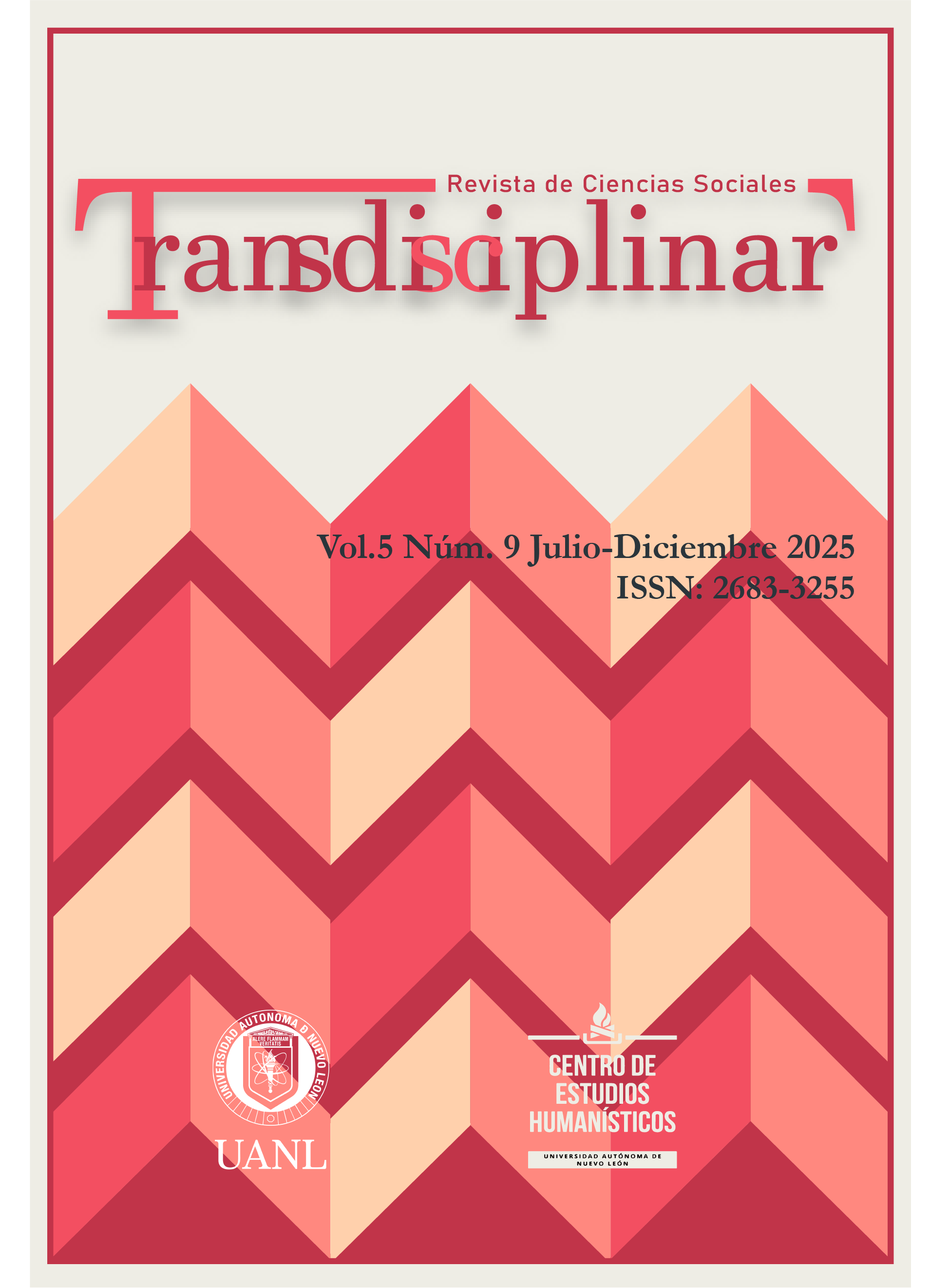Resumen
El objetivo de este trabajo fue una descripción de las carencias y las capacidades por ingresos de los trabajadores pobres y sus hogares que estaban por debajo del umbral de pobreza de los $3.20 dólares por día en México en 2020 mediante el análisis de los microdatos de las encuestas de ingreso y gasto de los hogares; se describe la relación entre desigualdad y la magra proporción del ingreso líquido que obtiene la población más pobre y los diferentes tipos de carencias sociales que se relacionan con los bajos ingresos como la inestabilidad laboral, los bajos salarios, las horas de trabajo, el gasto limitado en la salud y la educación, el hacinamiento, las dificultades de obtener comida suficiente y saludable, la vivienda, actividades de esparcimiento y la localización estatal.Citas
Acosta, F. (2001). Jefatura de hogar femenina y bienestar familiar: resultados de la investigación empírica. Papeles de POBLACIÓN, 7 (28), 41-97.
Centro Latinoamericano de Demografía(CELADE) (1996). Déficit habitacional y datos censales sociodemográficos: una metodología. Naciones Unidas. Comisión Económica para América Latina y el Caribe. https://hdl.handle.net/11362/9781
Comisión Nacional de los Salarios Mínimos (2020). Salarios mínimos 2020. Secretaría del Trabajo y Previsión Social. https://www.gob.mx/cms/uploads/attachment/file/525061/Tabla_de_salarios_m_nmos_vigentes_apartir_del_01_de_enero_de_2020.pdf
Consejo Nacional de Evaluación de la Política de Desarrollo Social (2019). Población con discapacidad enfrenta pobreza y dificultades para ejercer sus derechos sociales. Dirección de información y comunicación social. https://www.coneval.org.mx/SalaPrensa/Comunicadosprensa/Documents/2019/NOTA_INFORMATIVA_DIA_INTERNACIONAL_PERSONAS_CON_DISCAPACIDAD.pdf
Consejo Nacional de Evaluación de la Política de Desarrollo Social (2020). Pobreza a nivel municipio 2010-2020. Coneval. https://www.coneval.org.mx/Medicion/ Paginas/ Pobreza-municipio-2010 2020.aspx#:~:text=En%202020%2C%20en%209%20de, encontraba %20en%20situaci%C3%B3n%20de%20pobreza
Eardley, T. (1999). Working but poor? : Low pay and poverty in Australia. Social Policy Research center.
Escobedo de Luna , J. M. (2022). El 1 porciento más rico en México, 1984-2018. Estudios sociológicos, 40(119), 349-390.
Glendinning, C., y Baldwin, S. (1988). The costs of disability. En R. Walker & G. Parker (Eds.), Money matters: Income, wealth and financial welfare. Sage.
Guillén, A. M., y Dahl, S.-Å. (Eds.). (2009). Quality of work in the European Union: Concept, data and debates from a transnational perspective. Peter Lang Group AG
Instituto Nacional de Estadística y Geografía. INEGI. (2009). Encuesta Nacional de Ingresos y Gastos de los Hogares 2008. Ingresos y gastos de los hogares. Ingresos y gastos de los hogares. INEGI
.
Instituto Nacional de Estadística y Geografía. INEGI. (2020a). Encuesta Nacional de Ingresos y Gastos de los Hogares 2020. Nueva serie. Microdatos. INEGI. https://www.inegi.org.mx/programas/enigh/nc/2020/#Microdatos
Instituto Nacional de Estadística y Geografía. INEGI. (2020b). PIB y Cuentas Nacionales. Sectores Institucionales . INEGI. https://www.inegi.org.mx/temas/si/#Tabulados
Instituto Nacional de Salud Pública (2021). Encuesta Nacional de Salud y Nutrición 2020 sobre Covid-19. Resultados nacionales. Instituto Nacional de Salud Pública. https://ensanut.insp.mx/encuestas/ensanutcontinua2020/doctos/informes/ensanutCovid19ResultadosNacionales.pdf
International Labour Office (2014). World Social Protection Report 2014/15: Building economic recovery, inclusive development and social justice. International Labour Office. https://www.ilo.org/wcmsp5/groups/public/---dgreports/---dcomm/ documents/ publication/wcms_245201.pdf
Lee, S., McCann D. y Messenger J. (2007). Working Time around the World: Trends in Working Hours, Laws and Policies in a Global Comparative Perspective. Routhledge.
Lohmann, H. (2006). Working poor in Western Europe: What is the influence of the welfare state and labour market institutions?. N/A
Martínez de Navarrete, I. (1982). La Distribución del Ingreso en México: Tendencias y Perspectivas, en El Perfil de México en 1980, Ibarra, David. México: Siglo XXI Editores.
Organisation for Economic Co-operation and Development. (2023). Household spending. OECD. https://data.oecd.org/hha/household-spending.htm
Palmer, M. (2011). Disability and Poverty: A Conceptual Review. Journal of Disability Policy Studies. 21(4) 210–218.
Sociedad Hipotecaria Federal (2021). Índice SHF de precios de la vivienda en México, cuarto trimestre de 2020. https://www.gob.mx/shf/es/articulos/indice-shf-de-precios-de-la-vivienda-en-mexico-cuarto-trimestre-de-2020-263700?idiom=es
Sen, A. (2000). Development as freedom. Anchor books.
World Bank (2018). Poverty and Shared Prosperity 2018: Piecing Together the Poverty Puzzle. World Bank.
World Bank (2023a). Global Consumption Database. What the data tell us. World Bank. https://datatopics.worldbank.org/consumption/market
World Bank (2023b). GDP (current US$). World Bank national accounts data, and OECD National Accounts data files. World Bank. https://api.worldbank.org/v2/en/indicator/NY.GDP.MKTP.CD?downloadformat=csv
World Bank (2024). Poverty Headcount Ratio at $3.20 a day (2011 PPP) (% of Population). https://data.worldbank.org/indicator/SI.POV.LMIC.
United Nations Children’s Fund (UNICEF) (2021). The State of the World’s Children 2021: On My Mind – Promoting, protecting and caring for children’s mental health. UNICEF. https://www.unicef.org/reports/state-worlds-children-2021
United Nations Children’s Fund (UNICEF) (2023). Educación y aprendizaje. La educación les da a niñas, niños y adolescentes las habilidades y conocimientos para alcanzar su máximo potencial y ejercer sus otros derechos. UNICEF. https://www.unicef.org/mexico/educaci%C3%B3n-y-aprendizaje
World Health Organization (2021). Obesity and overweight. WHO. https://www.who.int /en/news-room/fact-sheets/detail/obesity-and-overweight.
World Inequality Database(WID) (2021). Datos sobre desigualdad. https://wid.world/data/

Esta obra está bajo una licencia internacional Creative Commons Atribución 4.0.
Derechos de autor 2025 Jesús Manuek Escobedo de Luna





